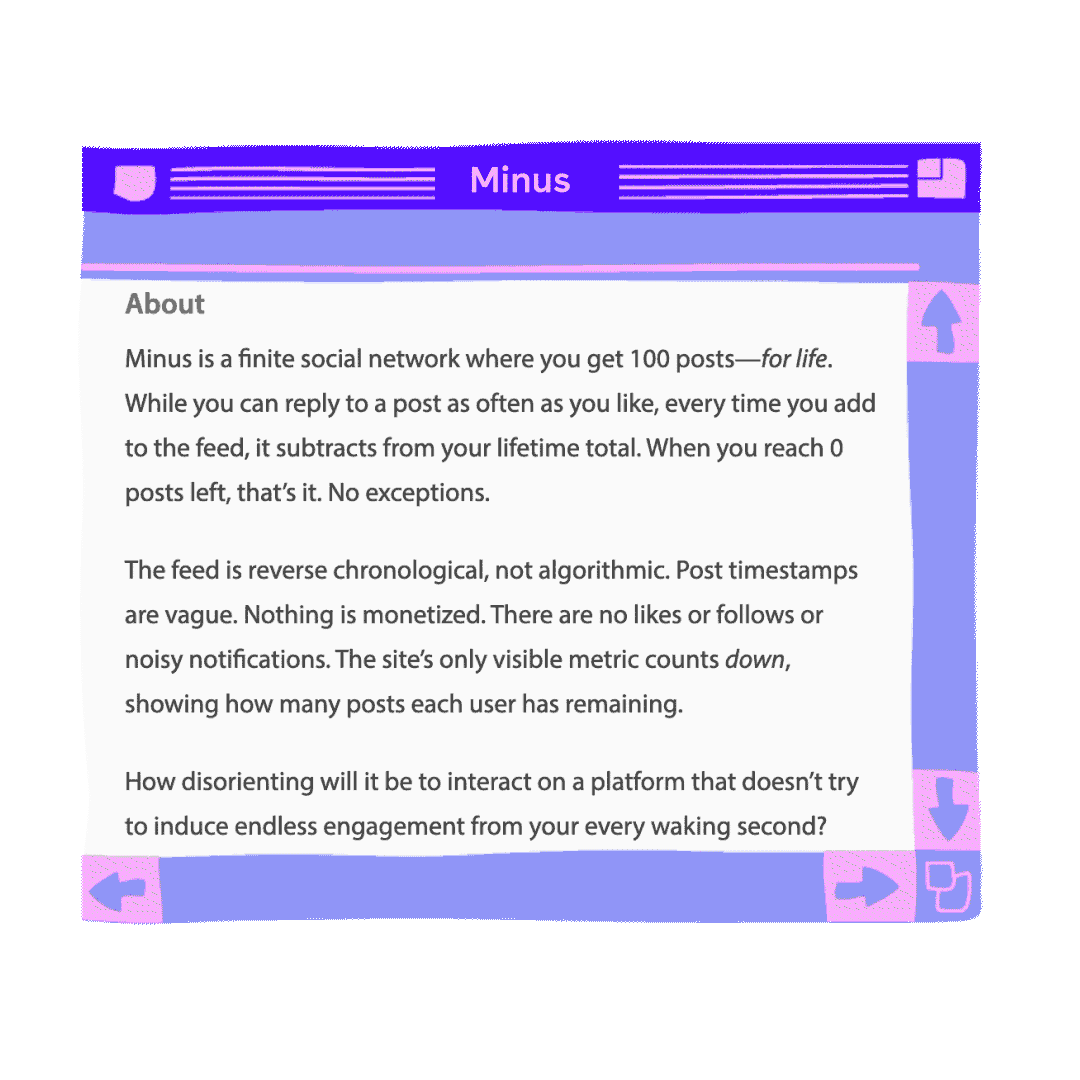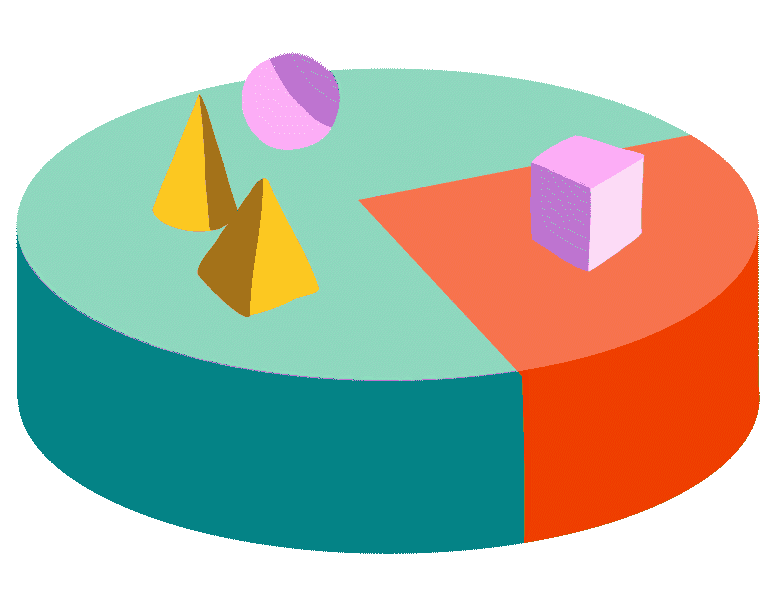🗳️ Opt-in for a better democracy.
How we can combine design, journalism, and economics to promote healthy participation in digital public spaces.
Welcome back to our summer of Options, citizens! It’s an honor to welcome Senior UX Designer Victoria Sgarro to this week’s newsletter. You’re in for a treat.
Before we begin: We’re having another virtual Summer Session on Wednesday 8/23 at 3pm Eastern, 12 noon Pacific. Definitely stop by, it’ll be fun and we’ll learn a lot.
Also, we’re thinking about hosting an in-person event in LA next month. Do you want to meet up with some of the New_ Public team and catch up with fellow LA readers? Add your name to our list, and we’ll keep you in the loop. —PM
In this week’s newsletter:
Three common models of democracy, and a fourth model that may surprise you.
The role of economics, journalism, and design in building these democratic models.
How digital public spaces can facilitate all models of democracy.
To design for public media, we ask many questions about democracy.
My path to design began in journalism. As an undergraduate, I took a night class with a reporter for the St. Louis Post Dispatch, I wrote and edited for my university’s political review, I was editor-in-chief of a student magazine about urban design, and I interned at a food magazine in downtown St. Louis. After graduation, I interned at National Geographic in the magazine’s art and graphics department, and moved to Italy for art school to study street photography.
A lot of what I love about journalism is what I love about design too: asking questions, talking to people and listening to their stories, witnessing a narrative emerge from research, and resolving the whole process by creating something. I’ve since worked as a product designer in the journalism industry at organizations like Axios and The Atlantic—and now at New_ Public, where we design for healthy digital conversational spaces, including those hosted by public media.
Since joining New_ Public, I’ve learned that a foundational assumption of our work is that healthy digital public spaces contribute to healthy democracies. To design healthy conversational public media spaces is to engage with questions of democratic participation and to interrogate the systems and incentives that fundamentally shape our design decisions: What is a healthy democracy? What is the role of journalism and the media in democracy? How should citizens participate in democracy?
Designing for media-centric digital public spaces is just one context of many that we’re designing for at New_ Public—but it’s the one I’ll focus on here.
(Re-)Defining democracy and our chosen roles.
As a designer, I’m most interested in understanding what design is aiming to achieve. That understanding often comes from direct user research—or equally likely, from a business imperative. However, in this particular case, the questions we’re asking are not ethnographic or descriptive (which is where user research excels); they’re normative or prescriptive, which requires theory. So rather than assume a neutral or universal stance—what Donna Haraway calls design “from nowhere”1—we can turn to a long history of political theory and examine each theory’s associated values. For this, I’ve turned to questions and theories that I encountered as a recent graduate student in economics at The New School for Social Research in New York.
At The New School, I learned that economics is political. Economic expertise, or technocracy, has often been used as rationale to bypass democratic decision-making and policy-making. (Just look into the history of central banks and austerity2, or the IMF and the World Bank and structural adjustment3, if you need some convincing.) In an attempt to get to the bottom of things and better define what economic democracy actually entails, I took one of my last classes in the politics department on “radical democracy.”
For starters, I learned that “democracy” comes from the Greek words demos (the people) and kratia (power).4 Democracy, then, is rule by the people—though notably, the original association of the demos with the poorest and most numerous class has all but disappeared since the 20th century.5 We typically understand democracy as a system that promotes the principles of liberty and equality.
More consequentially for my current work, I learned that while the modern use of “democracy” most commonly refers to the liberal-representative model—this is the model implicitly referenced when you see a headline in the news about democracy—there’s not just one conception of democracy. Moreover, each conception offers a different theory of democratic participation, and thus different theories of how citizens can or should opt into democracy.
From working in the journalism industry, I know that journalists themselves have different conceptions of their roles in democratic society (though, of course, they may not relate these ideas to academic models of democracy), and therefore different aims for their journalism. For example, the reporting styles of different journalistic organizations reflect differing normative understandings of the role of journalism in people’s lives: short-form optimizes for digestibility and efficiency, while long-form optimizes for more nuanced understanding that requires more time.
In doing more research for New_ Public, I learned that it’s possible to merge these two threads: political theory offers different models of democracy, and scholars of the field of journalism studies have investigated how journalists can fit into these democratic models.6 7
How we’re thinking about democracy at New_ Public.
For our design work at New_ Public, I’ve been considering the three common models of democracy—specifically, of what it means for the public to opt into democracy—and the accompanying conceptions of journalists’ role in facilitating each of these different ideals of public participation.
1. Liberal-representative democracy
In liberal-representative democracy, citizens vote in elections for officials with experience and expertise to handle the demands of self-governance. Within this model, more specific models include elitist or competitive democracy, and liberal or realist democracy.8
In the elitist or competitive model, elections allow competition between elites for the public’s vote. Elites are free to manipulate or mislead voters in this process; in Joseph Schumpeter’s words, “The will of the people is the product and not the motive of the political process.”9 Once in power, legitimized by the public’s vote, elites implement policies without meaningful participation by citizens.
The liberal or realist model similarly includes elected representatives, but allows for more participation by citizens: institutions and rights of thought, expression, and association give citizens more opportunity to influence the definition of public interests and to hold representatives accountable.
Both versions of liberal-representative democracy envision the public’s role as one of detached participation, and leave citizens vulnerable to manipulation and disinformation in the process of election competition.
Again, the word “democracy” today most commonly refers to this model.
In liberal-representative democracy, journalists are neutral and objective.
This model of democracy conceives of the media and journalists as “objective and neutral facilitators,”10 guided by a belief in the existence of one truth or reality. Journalists transfer this objective information as presumably “detached observers” between elite officials and the public, so each can make informed decisions in their democratic roles.
2. Participatory democracy
In participatory democracy, citizens participate directly in the day-to-day activities of self-governance. This model emphasizes mass participation in public life, and counts each vote of those who participate equally.
However, participatory democracy leaves out the importance of public deliberation, and citizens often lack the information and attention needed for such deliberation: “Such a democracy risks substituting the whims of the people for the will of the people.”11 This model is vulnerable to the common criticism of “the tyranny of the majority.”
In participatory democracy, journalists are active initiators.
In this model, the media and journalists ideally act as “activating initiators,”12 dedicated to including all citizens in the democratic process. Journalists encourage individuals to express themselves and their subjective and emotional views in the media, in order to motivate more inclusive political participation.
3. Deliberative democracy
In deliberative democracy, citizens—in addition to electing representatives—participate in public reasoning and decision-making.13 This model aims for discourse rooted in rationality and impartiality, often assuming that the public can arrive at a broad consensus on the common good or the interests of citizens.
However, deliberative democracy leaves out institutions for regulation and enforcement of this consensus, and downplays the role of power and conflict in politics. It places a lot of faith in the possibility of rationality and consensus, and in citizens’ capacity for productive deliberation.14
In deliberative democracy, journalists are rational moderators.
This model views the media and journalists ideally as “moderators of rational discourse”15 about civic issues, striving to fairly represent different positions and provide analysis. Journalists educate the public and improve citizens’ capacity for self-reflection, facilitating (but not determining) a collective agenda-setting process.
How do these democracies translate to digital public spaces?
At New_ Public, we tend to agree as an organization that democracy is more than just the election process, contrary to the liberal-representative understanding—and that’s why public spaces, and digital public spaces in particular for us, are so important.
Digital public spaces don’t always directly influence elections (although they certainly can, as we saw in the U.S. in 2016), but do act as places of public interaction, conversation, learning, and deliberation—in other words, as sites of democratic participation.
While most democracies today fall under the liberal-representative model, all actual democracies incorporate aspects of various models, and we can look to democratic participation beyond voting as an aspiration, while acknowledging this aspiration as a normative position on what kind of democracy we are hoping to influence and also as a large assumption that this kind of democracy is feasible.
So let’s look again at the role of media in the two democratic models that move beyond the liberal-representative understanding: participatory democracy and deliberative democracy—this time, with a specific New_ Public lens. Then, we can begin to identify each model’s design implications for digital public spaces.
Participatory democracy could be a digital promenade.
Because participatory democracy emphasizes public participation, we can think of our design goal as helping as many as possible to opt into democratic conversation in an online public space—in short, encouraging quantity of participation. According to political theory, this “quantity” should include everyone, even the “silent majority,” in as many styles of participation including subjective and emotional styles, and in an ongoing manner.
One appropriate public space metaphor for the participatory model might be the promenade. In A Pattern Language—to which we at New_Public turn often—architects Christopher Alexander et al. write of the promenade:
“People go there to walk up and down, to meet their friends, to stare at strangers, and to let strangers stare at them… the beauty of the promenade is simply this: people with a shared way of life gather together to rub shoulders and confirm their community.”16
The promenade is a public space for community members to see and be seen, and therefore requires a high density of activity in order to function as an effective public space. At the same time, we also know that in any given online space, a very small percentage of users participate in the conversation by writing and replying to comments.
In the following examples from around the internet, many new platforms are experimenting with new ways for users to participate in public conversation beyond writing or replying to comments. These features allow stewards of digital public spaces to be activating initiators of participation, representation, and self-expression.



Deliberative democracy could be an online street cafe.
Because deliberative democracy emphasizes public deliberation, we can think of our design goal as facilitating a better way to opt into democratic conversation in an online public space—in short, promoting quality of participation.17
An appropriate public space metaphor for this deliberative model might be the street cafe. Alexander et al. describe the street cafe as uniquely “a setting for discussions of great spirit—talks, two-bit lectures, half-public, half-private, learning, exchange of thought.”18
The authors compare the conversations that take place in these cafes with classroom instruction—the former as important for the intellectual and emotional growth of the public as the latter is for students.
Below are a few examples that allow stewards of digital public spaces to be moderators of rational discourse—where rational discourse is seen as democratic participation—optimizing for respectful norms, constructive exchange, and mutual understanding that improve the quality of online conversations.



Democracy in digital public spaces can also be radical.
A fourth model not yet examined, but briefly mentioned at the start, is radical democracy or “… democracy in its essential form, democracy at its root, quite precisely the thing itself.”19 To return to etymology, “radical” comes from the Latin word radix (root). In a sense, anything radical goes back to its source in order to renew itself for the future.
While there are many different interpretations or versions of radical democracy (too many to go into here!), radical democracy returns to the original conception of the demos as the poorest and most numerous class. Democracy, radically, prevents economic disadvantages from becoming political disadvantages.
In the words of my professor, Andreas Kalyvas:
“… if democracy is radical it is because it names the political victory of the lower part of society, the part that counts less, against the domination of the part that counts more, the wealthiest part.”20
A question that our class at The New School posed was whether or not we can truly have democracy under economic exploitation. In the context of this discussion, it’s important to consider what it means for us to rely on many privately-owned digital spaces to act as public spaces of democratic participation. Ultimately, radical democracy does not imply the elimination of economic divisions, but rather requires that economic power does not equate to political power.
Perhaps digital public spaces could live up to this promise, as the internet was always meant to be open to everyone—an equalizer of sorts. But this hope for digital public spaces requires facing the oppressive structures of our shared world, so that the disadvantages one experiences in real life do not impact one’s democratic participation offline or online. In this way, returning to this utopian vision of the internet could be a radical act.
We can all be brave participants in our democracies.
It’s important for us at New_ Public to explicitly discuss what we believe the role of journalism and media in democracy should be.
I offer these early ideas in order to bring these assumptions and judgements to the fore, as they greatly impact our definition of the problem we’re solving and therefore the solutions we’re building. These democratic models provide a few theories to inform these judgments, which we will then combine with more qualitative UX research with our publics.
I’ve also learned that participating in these conversations requires a certain openness to—and tolerance for—not knowing. One of the hardest things about being a journalist for me was the feeling of not being an expert in what I was writing about.
During the summer I spent at National Geographic calling up sources and asking them to review illustrations or graphics for mistakes, I felt deeply unprepared. And the same feeling came up when I returned to an academic setting in a new discipline as an adult. (And even in writing this article!)
In our early research at New_ Public, we have found that many people don’t contribute to online conversations because they similarly feel like they don’t know enough. I’m hoping that we can design spaces where everyone can be encouraged to thoughtfully participate.
I believe there can be many ways for each of us to participate in our democracies. Maybe the most important thing is to keep trying, and to find the ways that work for you. 🌳
Thank you to Paul Mendoza, Min Li Chan, and Corey Chao.
This week's newsletter was illustrated and animated by Esther Abosch.And that’s it for this week! We’re taking Labor Day off. I’ll be back on September 10 to talk about another favorite street of mine. Check out part one and part two.
P.S. It’s last call for the New_ Public Survey. I’m keeping it open until Labor Day. If you haven’t chimed in yet, speak now. Fill out our survey today.
If you liked what you read today, hit that “Subscribe” button.
Marking up my sample ballot,
Paul
Rosner, D. K. (2020). Critical Fabulations: Reworking the Methods and Margins of Design. The MIT Press.
Mattei, C. (2022). The Capital Order: How Economists Invented Austerity and Paved the Way to Fascism. The University of Chicago Press.
Hickel, J. (2018). The Divide: A Brief Guide to Global Inequality and its Solutions. Penguin Random House.
Lummis, D.C. (1996). Radical Democracy. Cornell University Press. http://www.jstor.org/stable/10.7591/j.ctt1ht4xw5.6
Kalyvas, A. (2019). Democracy and the poor: Prolegomena to a radical theory of democracy. Constellations 26, 538-553. https://doi.org/10.1111/1467-8675.12451
Riedl, A. (2019). Which journalists for which democracy? Journalism Studies 20(10), 1377-1399. https://doi.org/10.1080/1461670X.2018.1519638
Strömbäck, J. (2006). In search of a standard: Four models of democracy and their normative implications for journalism. Journalism Studies 6(3), 331-345. https://doi.org/10.1080/14616700500131950
For readers curious to go further down the rabbit hole, notable advocates of elitist or competitive democracy include Joseph Schumpeter and Richard Posner, and notable advocates of liberal or realist democracy include Robert Dahl, John Dunn, and Ian Shapiro.
Fishkin, J. (2019). Democracy when the people are thinking: Deliberation and democratic renewal. Proceedings of the American Philosophical Society, 163(2), 108-120. https://www.jstor.org/stable/45380624
Riedl, A. (2019). Which journalists for which democracy? Journalism Studies 20(10), 1377-1399. https://doi.org/10.1080/1461670X.2018.1519638
Fishkin, J. (2019). Democracy when the people are thinking: Deliberation and democratic renewal. Proceedings of the American Philosophical Society, 163(2), 108-120. https://www.jstor.org/stable/45380624
Riedl, A. (2019). Which journalists for which democracy? Journalism Studies 20(10), 1377-1399. https://doi.org/10.1080/1461670X.2018.1519638
Notable advocates of deliberative democracy include John Rawls, Jurgen Habermas, G.A. Cohen, Seyla Benhabib, Amy Gutmann, and Dennis Thompson.
Hamilton, L. (2020). How to Read Amartya Sen. Penguin Random House India.
Riedl, A. (2019). Which journalists for which democracy? Journalism Studies 20(10), 1377-1399. https://doi.org/10.1080/1461670X.2018.1519638
Alexander, C., Ishikawa, S., Silverstein, M., Jacobson, M., Fiksdahl-King, I., & Angel, S. (1977). A pattern language: Towns, buildings, construction. Oxford University Press.
Again drawing on theory: “quality” here can be defined as constructive, respectful, rational, plural, and consensus-building.
Alexander, C., Ishikawa, S., Silverstein, M., Jacobson, M., Fiksdahl-King, I., & Angel, S. (1977). A pattern language: Towns, buildings, construction. Oxford University Press.
Lummis, D.C. (1996). Radical Democracy. Cornell University Press. http://www.jstor.org/stable/10.7591/j.ctt1ht4xw5.6
Kalyvas, A. (2019). Democracy and the poor: Prolegomena to a radical theory of democracy. Constellations 26, 538-553. https://doi.org/10.1111/1467-8675.12451







Great piece, thank you. Especially liked the recommended tools like for opinion landscaping and digital graffiti -- helps us think about how tech can make journalism more participatory and interactive beyond more typical approaches (comment section, social media, etc.)
The second season of my podcast, When the People Decide, shows how participatory and deliberative democracy are being utilized in cities across the country. Learn about participatory budgeting, citizen juries, and more! https://thepeopledecide.show/season-2